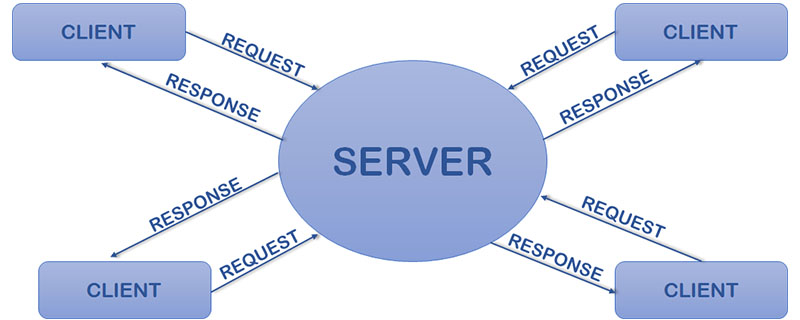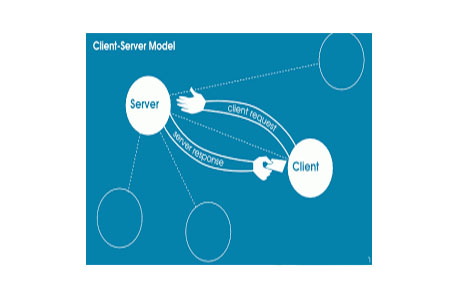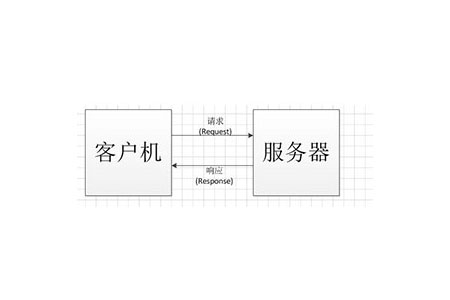What is the C/S architecture?
cs architecture is a client/server architecture, in which the client relies on the server to obtain resources. The cs architecture reduces network traffic by providing query responses. It has three types of structures: one-layer architecture and two-layer architecture. architecture and three-tier architecture.

C/S architecture is a client/server architecture, in which the client relies on the server to obtain resources, and the C/S architecture reduces the network by providing query responses flow. It has three types of structures: one-layer architecture, two-layer architecture and three-layer architecture.
C/S architecture is a mainstream technology in today's network development architecture and was first developed by the American Borland Company. Next, I will introduce this architecture in detail in the article, which has certain reference value and I hope it will be helpful to everyone.

【Recommended course: PHP Tutorial】
The meaning of C/S architecture
C/S architecture is called client/server architecture. It is a network architecture in which the client is the user running the application. On PC or workstation, the client relies on the server to obtain resources. The C/S architecture reduces network traffic by providing query responses rather than total file transfers. It allows multiple users to update to a shared database through a GUI front-end. Communication between clients and servers generally uses remote calls (RPC) or standard query language (SQL) statements.
Basic characteristics of C/S architecture:
(1) The client process contains solution-specific logic and provides a link between the user and the rest of the application system interface between. Server processes act as software engines that manage shared resources such as databases, printers, modems, or high-performance processors.
(2) Front-end tasks and back-end tasks have fundamentally different requirements for computing resources, such as processor speed, memory, disk speed and capacity, and input/output devices.
(3) The hardware platforms and operating systems of the client and server are usually different. Client and server processes communicate through a well-defined set of standard application programming interfaces (APIs) and RPCs.
(4) An important feature of C/S architecture is scalability, they can be scaled horizontally or vertically. Horizontal scaling means adding or removing clients and workstations with only a slight impact on performance. Vertical scaling means moving to a larger and faster server computer or multiple servers.

Type of C/S architecture
One-layer architecture
Here In a type C/S architecture setup, the user interface, marketing logic and data logic exist in the same system. However, it is difficult to manage due to data differences. For example, MP3 players and MS Office are single-layer applications.
Two-tier architecture
In this type, the user interface is stored on the client machine and the database is stored on the server. Database logic and business logic are documented on the client or server, but require maintenance. If business logic and data logic are collected on the client side, then it is named as thick client thin server architecture. If business logic and data logic are handled on the server, it is called thin client fat server architecture. This is considered affordable.
In a two-tier architecture, the client and server must be merged directly. If the client provides input to the server, there shouldn't be any middleware. This is done to get results quickly and avoid confusion between different clients. For example, online ticket booking software uses this two-tier architecture.

Three-tier architecture
In the three-tier architecture, additional middleware needs to be used, which means client requests The server needs to be entered through this middle layer, and the server's response is first received by the middleware and then to the client. Middleware stores all business logic and data channel logic, middleware increases flexibility and provides optimal performance.
The three-tier structure is divided into three parts, namely the presentation layer (customer layer), application layer (business layer) and database layer (data layer). The client system manages the presentation layer, the application server is responsible for the application layer, and the server system monitors the database layer.

Summary: The above is the entire content of this article, I hope it will be helpful to everyone.
The above is the detailed content of What is the C/S architecture?. For more information, please follow other related articles on the PHP Chinese website!

Hot AI Tools

Undresser.AI Undress
AI-powered app for creating realistic nude photos

AI Clothes Remover
Online AI tool for removing clothes from photos.

Undress AI Tool
Undress images for free

Clothoff.io
AI clothes remover

Video Face Swap
Swap faces in any video effortlessly with our completely free AI face swap tool!

Hot Article

Hot Tools

Notepad++7.3.1
Easy-to-use and free code editor

SublimeText3 Chinese version
Chinese version, very easy to use

Zend Studio 13.0.1
Powerful PHP integrated development environment

Dreamweaver CS6
Visual web development tools

SublimeText3 Mac version
God-level code editing software (SublimeText3)

Hot Topics
 Alipay PHP SDK transfer error: How to solve the problem of 'Cannot declare class SignData'?
Apr 01, 2025 am 07:21 AM
Alipay PHP SDK transfer error: How to solve the problem of 'Cannot declare class SignData'?
Apr 01, 2025 am 07:21 AM
Alipay PHP...
 Explain JSON Web Tokens (JWT) and their use case in PHP APIs.
Apr 05, 2025 am 12:04 AM
Explain JSON Web Tokens (JWT) and their use case in PHP APIs.
Apr 05, 2025 am 12:04 AM
JWT is an open standard based on JSON, used to securely transmit information between parties, mainly for identity authentication and information exchange. 1. JWT consists of three parts: Header, Payload and Signature. 2. The working principle of JWT includes three steps: generating JWT, verifying JWT and parsing Payload. 3. When using JWT for authentication in PHP, JWT can be generated and verified, and user role and permission information can be included in advanced usage. 4. Common errors include signature verification failure, token expiration, and payload oversized. Debugging skills include using debugging tools and logging. 5. Performance optimization and best practices include using appropriate signature algorithms, setting validity periods reasonably,
 How does session hijacking work and how can you mitigate it in PHP?
Apr 06, 2025 am 12:02 AM
How does session hijacking work and how can you mitigate it in PHP?
Apr 06, 2025 am 12:02 AM
Session hijacking can be achieved through the following steps: 1. Obtain the session ID, 2. Use the session ID, 3. Keep the session active. The methods to prevent session hijacking in PHP include: 1. Use the session_regenerate_id() function to regenerate the session ID, 2. Store session data through the database, 3. Ensure that all session data is transmitted through HTTPS.
 What are Enumerations (Enums) in PHP 8.1?
Apr 03, 2025 am 12:05 AM
What are Enumerations (Enums) in PHP 8.1?
Apr 03, 2025 am 12:05 AM
The enumeration function in PHP8.1 enhances the clarity and type safety of the code by defining named constants. 1) Enumerations can be integers, strings or objects, improving code readability and type safety. 2) Enumeration is based on class and supports object-oriented features such as traversal and reflection. 3) Enumeration can be used for comparison and assignment to ensure type safety. 4) Enumeration supports adding methods to implement complex logic. 5) Strict type checking and error handling can avoid common errors. 6) Enumeration reduces magic value and improves maintainability, but pay attention to performance optimization.
 Describe the SOLID principles and how they apply to PHP development.
Apr 03, 2025 am 12:04 AM
Describe the SOLID principles and how they apply to PHP development.
Apr 03, 2025 am 12:04 AM
The application of SOLID principle in PHP development includes: 1. Single responsibility principle (SRP): Each class is responsible for only one function. 2. Open and close principle (OCP): Changes are achieved through extension rather than modification. 3. Lisch's Substitution Principle (LSP): Subclasses can replace base classes without affecting program accuracy. 4. Interface isolation principle (ISP): Use fine-grained interfaces to avoid dependencies and unused methods. 5. Dependency inversion principle (DIP): High and low-level modules rely on abstraction and are implemented through dependency injection.
 How to debug CLI mode in PHPStorm?
Apr 01, 2025 pm 02:57 PM
How to debug CLI mode in PHPStorm?
Apr 01, 2025 pm 02:57 PM
How to debug CLI mode in PHPStorm? When developing with PHPStorm, sometimes we need to debug PHP in command line interface (CLI) mode...
 How to automatically set permissions of unixsocket after system restart?
Mar 31, 2025 pm 11:54 PM
How to automatically set permissions of unixsocket after system restart?
Mar 31, 2025 pm 11:54 PM
How to automatically set the permissions of unixsocket after the system restarts. Every time the system restarts, we need to execute the following command to modify the permissions of unixsocket: sudo...
 How to send a POST request containing JSON data using PHP's cURL library?
Apr 01, 2025 pm 03:12 PM
How to send a POST request containing JSON data using PHP's cURL library?
Apr 01, 2025 pm 03:12 PM
Sending JSON data using PHP's cURL library In PHP development, it is often necessary to interact with external APIs. One of the common ways is to use cURL library to send POST�...






